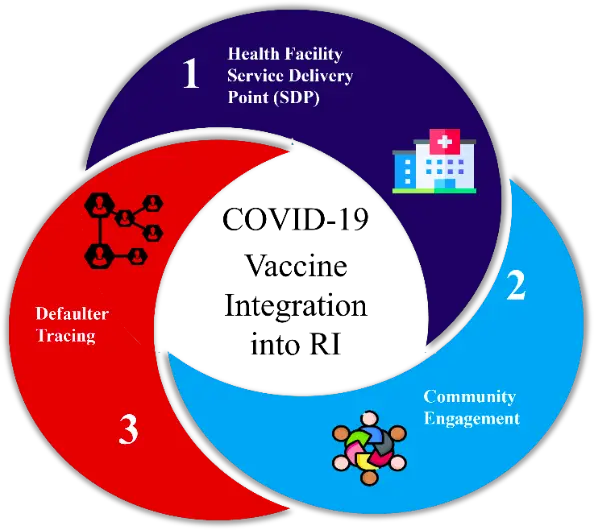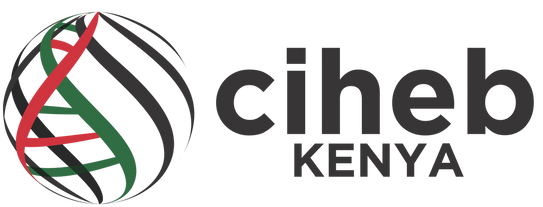Introduction
The CDC-supported TRACK program, implemented by Ciheb-Kenya in collaboration with Kenya’s Ministry of Health, has transitioned from an initial COVID-19 vaccination acceleration initiative to a comprehensive and sustainable model for life-course immunization. It addresses critical immunization gaps, particularly in underserved populations, vaccine safety, and adverse events following immunization (AEFIs) reporting and case investigations, enhancing vaccine delivery across Kenya.
Key Achievements:
-
 Improved health care workers (HCWs) capacity on COVID-19 vaccines and uptake.
Improved health care workers (HCWs) capacity on COVID-19 vaccines and uptake.- Trained 569) across 14 counties.
- COVID-19 vaccination coverage improved from 33% to 45% among 12.6M eligible people (Mar 2022–Mar 2023).
- Among 494,272 persons living with HIV (PLHIV) in 656 facilities, vaccination coverage increased from 27% to 65%.
-
Enhanced Vaccine Safety (Cohort Event Monitoring - CEM) - a study that monitored AEFI following COVID-19 vaccinations in15 counties in Kenya to assess their incidence, severity, and risk factors.
-
In 15 counties, 88 HCWs were trained and 9,288 participants enrolled; 6,265 adverse events were reported, mostly mild (e.g., headache: 21%, injection site pain: 18%).
-
Key AEFI risk factors were age, chronic illness, concomitant medication, and vaccine type.
-
-
Integrated COVID-19 vaccines into Routine Immunization
-
In Kisumu, TRACK implemented a 3-pillar model: facility-based screening, community engagement, and defaulter tracing.
-
155,096 people screened, yielding 4,937 COVID-19 vaccinations; 66,950 children screened, contributing 2,950 MR2 doses.
-
7,505 defaulters listed; 81% linked to vaccination.
-
CHPs screened 13,679 children: 68% with missed doses successfully referred and vaccinated.
-
Strengthened data use via monthly reviews and distributed 10,000 MCH booklets.
-
-
Implemented the Big Catch-Up Vaccination project in Siaya County aimed to improve catch-up vaccination for children under five by screening for the immunization status, appropriate documentation and defaulter tracking in 55 health facilities.
-
Trained 79 HCWs, 31 HRIOs, 925 CHPs, and 74 CHAs on catch-up vaccination, defaulter tracing, and documentation.
-
Improved Immunization coverage: Penta1 (88.7% → 97.7%), Penta3 (75.5% → 92.4%), MR1 (52.1% → 78%), MR2 (19.3% → 36.8%)
-
Reduced Dropout rates for Penta1–Penta3 fell from 15.0% to 5.8%; missed opportunities at 9 months halved (108 → 51)
-
-
Implemented the Polio Seroprevalence Survey aimed at determining immune response after two doses of nOPV2 vaccine during outbreak response was conducted in Kitui and Tana River; 1,888 samples collected, and 461 children analyzed and 62% demonstrated an immune response after two nOPV2 doses, informing outbreak response efficacy.
Conclusion
The TRACK program has played a role in strengthening vaccine delivery systems in Kenya, from integrating COVID-19 vaccination into routine immunization, addressing immunization gaps caused by the pandemic, monitoring of COVID-19 vaccine safety, to routinizing catch-up vaccination. TRACK is committed to enhancing vaccine delivery through innovative and responsive health interventions through health systems strengthening, strategic partnerships, research, education, and data-driven approaches.Bottom of Form
